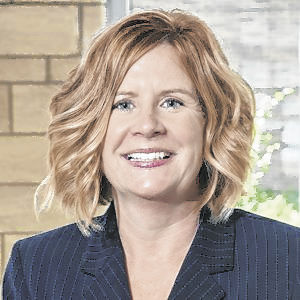
Effective Saturday, people entering Schneck Medical Center in Seymour or any of its offsite physician practices will once again be screened.
If they answer yes to any of these four questions, they will not be allowed inside: Have you been diagnosed with COVID-19 in the last 14 days? Have you been exposed to COVID-19 in the last 14 days? Are you awaiting a COVID-19 test result? Are you currently experiencing symptoms of COVID-19?
The hospital conducted screenings from the start of the pandemic in March 2020 until May 1 of this year. Even though those were discontinued, patients, visitors, vendors, delivery people and others not employed by Schneck have still been required to wear face masks.
Earlier this summer, however, the Occupational Safety and Health Administration issued emergency temporary standards as part of its National Emphasis Programs on COVID-19.
Those are intended to protect health care workers, who are most likely to become infected with COVID through the course of their work.
As a result, the screenings will restart Saturday at Schneck. That also will include Schneck employees before they report to work.
“We appreciate the public’s patience and understanding as we know the recommencing of screening at entrances might be frustrating,” said Kathy Covert, vice president of workforce and support services for Schneck. “Thank you for supporting our staff in administering these federal guidelines.”
The standards apply to the health care industry, specifically in areas where there is a high probability that a worker could come into contact with someone who has COVID or is suspected of having the virus.
“We’re required to be in compliance,” Covert said. “We just need people to be patient with us. It’s us being compliant and doing what we’re supposed to do. We’ve worked hard to make sure that we’re following it to the letter. If there’s a federal mandate or there’s a regulation, we take it serious and we comply.”
Additional staff members have been hired to do screenings at three places inside Schneck: The main patient entrance, emergency department entrance and main corridor from the Schneck Professional Building and Jackson Medical Building.
Patients who screen positive by answering yes to any screening question will be banded for identification and isolated from the general population.
“So as soon as they get to their destination, they can be isolated away from other patients and visitors to keep everybody safe,” Covert said.
Others who screen positive won’t be allowed to enter the facilities.
At offices in the two medical buildings and the offsite physician practices, Covert said the screening will be done at reception.
While restarting the screenings feels like a step backwards, she said it’s being done to ensure Schneck is in compliance with OSHA standards.
“They are trying to put these in to protect health care workers,” she said. “We’ve been able to keep people safe, and we’ve had very low workplace exposure. We’ve been able to do what we need to do to keep people safe.”
The standards require other actions related to employees, including a process for employee training and education about the standards, physical barriers in work areas, personal protective equipment usage and conservation, determination of employee vaccination status and certain environmental things, such as filtration systems, HVAC requirements, etc.
“Schneck has had processes in place to address all of these things prior to the OSHA guidelines becoming effective to keep patients, visitors and staff safe,” Covert said. “Schneck will remain in compliance with the Indiana immunization passport law requirements in regards to determination of employee vaccination status.”
Covert noted the OSHA standards are distinct and separate from those issued by the Centers for Disease Control and Prevention.
“When the OHSA emergency temporary standards and CDC guidance differ, Schneck will generally adhere to the more stringent guidelines to keep our patients and team members safe,” she said.
“For example, masking is a guideline for hospitals from the CDC. The OHSA ETS touches briefly on masking, but the CDC guidelines are much more comprehensive at this point,” she said. “We know this can be so confusing for the general public, so we will continue to post updates on social media, have appropriate signage and educate the public about the various requirements in place for health care systems.”
